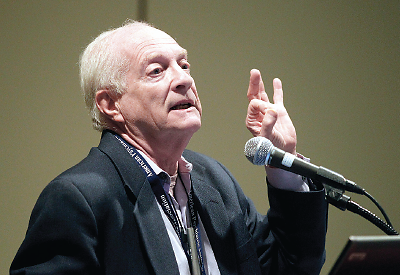Benzodiazepines: Experts Urge Balance
Abstract
Experts counsel a balanced, informed view when deciding whether benzodiazepines are indicated for treatment for anxiety.
While the use of benzodiazepines for the treatment of anxiety have come under much scrutiny lately, a more balanced view is needed, said Edward Silberman, M.D., at APA’s 2015 annual meeting in Toronto in May.
When used appropriately and carefully, benzodiazepines have their place, said Silberman, a professor of psychiatry at Tufts University School of Medicine in Boston, who chaired the symposium “The Place of Benzodiazepine for Anxiety Disorders: Are We Ignoring the Evidence?”

In the 1950s and 1960s, medications were used to treat people in response to the stresses they were experiencing in life, and tranquilizers were the drug of choice, says sociologist Allan Horwitz, Ph.D., of Rutgers University.
The roots of the debate lie as much in medical history as they do in symptomatology, said sociologist Allan Horwitz, Ph.D., a professor in the Department of Sociology and the Institute for Health, Health Care Policy, and Aging Research at Rutgers University in New Brunswick, N.J.
In the 1950s and 1960s, anxiety was seen as lying at the core of neurotic disorders in the first two iterations of the DSM, said Horwitz. Medications were seen as useful responses to the stresses of life and tranquilizers were the drug of choice, applied to a range of psychosocial problems.
All that changed suddenly around 1975 with the ascendancy of what the late psychiatrist Gerald Klerman, M.D., called “pharmacological Calvinism,” the idea that if a drug makes a person feel good, it must be bad.
“Benzodiazepines got caught up in the anti-drug movement as the Food and Drug Administration attacked drug companies for seeking to mitigate the problems of ordinary life rather than curing diseases,” said Horwitz.
Publication of DSM-III in 1980 was “a truly revolutionary event,” he said. It sliced up anxiety into many subspecies while broadening the ways to diagnose depression, making diagnosis of the former more difficult and the latter easier.
A major transformation was under way. In the 1950s, the social context led to stress and then to anxiety. By the 1990s, depression, generated within the individual, became the cause of disorder.
Prescriptions for anxiety were three times more common for anxiolytics in 1962, a proportion completely reversed by 2002. Antidepressants are sometimes prescribed today as benzodiazepines were half a century ago, said Horowitz, “to address underlying, ordinary human psychic, somatic, and interpersonal problems.”
Some clinicians and researchers have raised questions about how benzodiazepines are prescribed.
“[U]se of benzodiazepines in the United States is substantially higher among women than men and increases with age,” wrote Mark Olfson, M.D., M.P.H., a professor of clinical psychiatry at Columbia University, and colleagues in the February JAMA Psychiatry. Insomnia (42 percent) and anxiety (36 percent) were the most common indications for new benzodiazepine prescriptions among older patients in primary care, where 90 percent of such prescriptions are written.
“Benzodiazepines are drugs that should be used at most for a few days or weeks in selected patients, carefully monitored, and stopped as soon as possible,” wrote Nicholas Moore, M.D., Ph.D., of the Department of Pharmacology at the University of Bordeaux, and colleagues in an editorial in the same issue.
At the APA meeting, Silberman suggested that the medications have their place but are not very useful for insomnia. “Benzos don’t make people very sleepy,” he said. “They are a good sleep medication only if their insomnia is secondary to their anxiety.”
Appropriately used as anxiolytics, benzodiazepines are rapid acting, well tolerated, and have low toxicity, he said. They work well for patients with panic, social anxiety, and mixed anxiety diagnoses, but less so for those with generalized anxiety disorder (GAD).
“With GAD you have to be more careful because there is no clear endpoint,” he said. “You are trying to keep it under control long enough to allow nonpharmacological approaches to go to work.”
At the same time, clinicians should be aware of the potential for some cognitive impairment or coordination problems among elderly patients, contraindicating them for this population, in his view. Abuse of the medication is generally limited to patients with a prior history of substance abuse.
“Benzodiazepines are rarely taken alone for recreational purposes,” added Richard Balon, M.D., a clinical professor of psychiatry and anesthesiology at Wayne State University School of Medicine. “They are more often used by users of other drugs like alcohol or cocaine. Long-term treatment is not deleterious and does not necessarily lead to abuse.”
The session at the APA annual meeting was well attended, but even a glance at the positions of each side of the controversy suggests that it will continue for some time. ■



